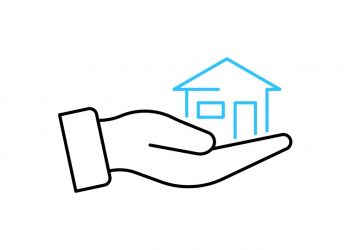 Traditionally, first-time buyers are the pillars of a strong home-purchase market. However, today’s industry reveals that current market dynamics may be making it difficult for them to achieve their American dream, potentially leading to a slowdown of the industry’s recovery.
Traditionally, first-time buyers are the pillars of a strong home-purchase market. However, today’s industry reveals that current market dynamics may be making it difficult for them to achieve their American dream, potentially leading to a slowdown of the industry’s recovery.
From volatile interest rates, to inventory shortages and rising home prices, today’s first-timers have to work hard to overcome the current market challenges.
“Today, first-time homebuyers are entering the market at a somewhat slower pace than past generations,” says Matt Vernon, Home Loans Sales Executive at Bank of America. “While we see survey after survey that says people still believe in homeownership, first-time buyers today may be concerned about fluctuating interest rates, rising home prices, personal debt or down payment savings requirements. Many markets also have inventory shortages, where current homeowners are remaining in properties that might be considered ‘first-time’ homes.”
While they may be slow to enter the market, it’s not as if today’s younger generation doesn’t want to become homeowners. According to the inaugural edition of the Zillow Housing Confidence Index (ZHCI), millions of current renters nationwide aspire to buy a home in the next year, suggesting strong demand among potential first-time homebuyers if market conditions are favorable.
“Once of the things that will start to happen —and needs to happen—is the return of the entry-level buyer to the market,” predicts Rei Mesa, president and CEO, Berkshire Hathaway HomeServices Florida Realty
“This goes hand in hand with investors pulling back from the market. Investors had been buying the lower-price point properties that normally would have gone to entry-level buyers, but first-time buyers couldn’t compete with the all-cash deals of investors.”
In 19 of the 20 large metro areas recently surveyed for the ZHCI, over 5 percent of all residents indicated they wanted to buy a home in the next year. About 10 percent of all current renters nationwide state they would like to buy within the next 12 months, and the vast majority of these respondents also said they were confident or somewhat confident they could afford homeownership now. If these statistics hold true, and all respondents that indicate an interest in buying actually did purchase a home in the next year, it would represent more than 4.2 million first-time home sales, more than double the roughly 2.1 million first-time home buyers in 2013.
While it would appear the desire to own a home is strong, market conditions may be holding back potential first-time buyers. Inventory is up over 12 percent from a year ago, but still remains far below standard levels. Additionally, it seems to be continuing on a downward trend, falling year-over-year in eight of the 20 metro areas surveyed by the ZHCI.
“For the housing market to continue its recovery, it is critical that homes are both available and remain affordable to meet the strong demand these survey results are predicting, particularly from first-time homebuyers,” says Zillow Chief Economist Dr. Stan Humphries. “Even after a wrenching housing recession, this data shows that the dream of homeownership remains very much alive and well, even in those areas that were hardest hit. But these aspirations must also contend with the current reality, and in many areas, conditions remain difficult for buyers. The market is moving toward more balance between buyers and sellers, but it is a slow and uneven process.”
So what are some of the biggest challenges for today’s first-timer? A lack of inventory is one of the top issues.
“The tight housing inventory situation across the country has led to a shortage of affordable homes in many markets,” explains Vernon. “Many existing homeowners have delayed ‘moving up to larger or more expensive homes, reducing the number of typical ‘first-time’ properties. Raising money for a down payment has always been a challenge for home buyers, but today many young people also need to manage student loan commitments.”










